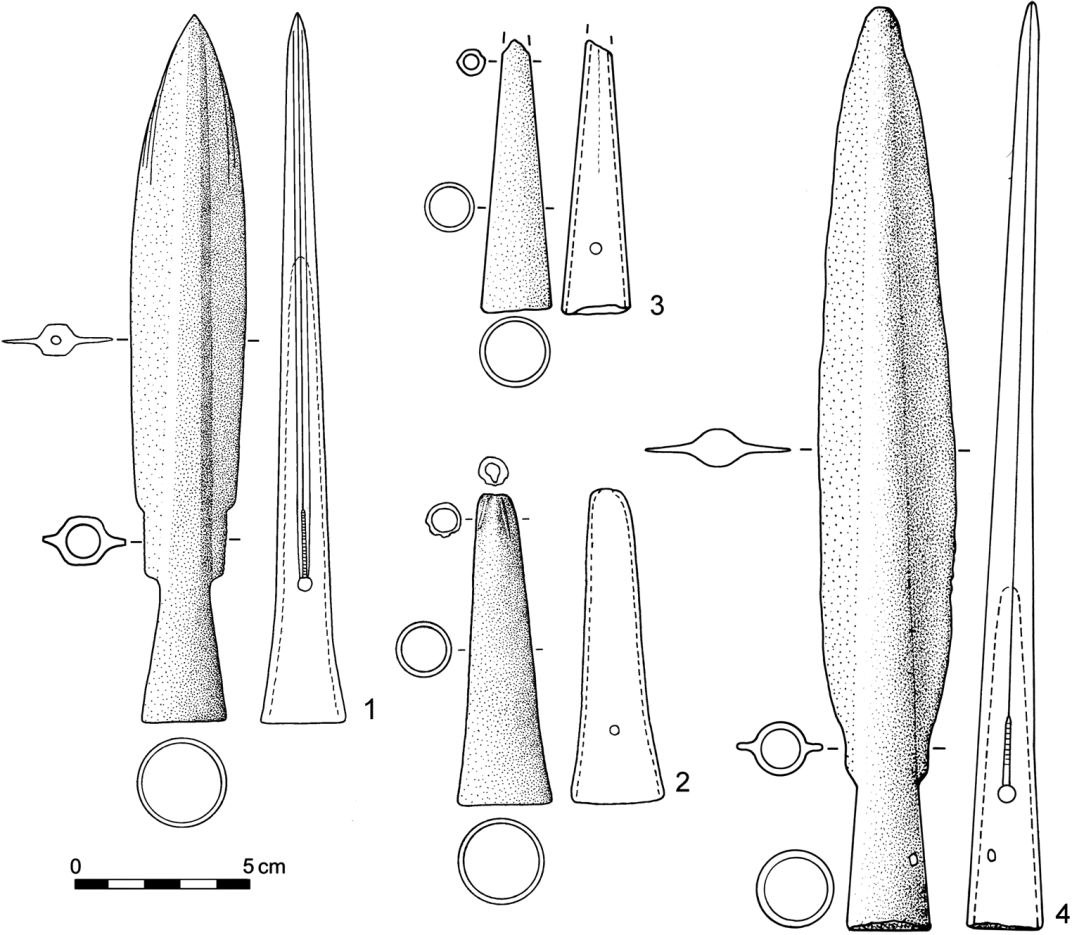Bronzové komponenty kopí od Babic nad Svitavou (okr. Brno-venkov) a jejich přínos pro poznání vojenství v době popelnicových polí a pro sémantiku pramenů
DOI:
https://doi.org/10.35686/AR.2016.10Klíčová slova:
mladší doba bronzová, Morava, hrot kopí, botka kopí, ricasso, prvkové složení, válečnictvíAbstrakt
Dva na stejném místě náhodně objevené bronzové artefakty (hrot, botka) jsou reliktem celého kopí, které bylo původně úmyslně zaraženo hrotem do země. Hrot představuje vzácný typ s úzkým, ostře nasazeným listem s ricassem. Je datován do staršího stupně doby popelnicových polí a na Moravě představuje import jižní provenience. Obdobné prvkové složení se zvýšeným obsahem cínu u obou artefaktů svědčí o společném technologickém i geografickém původu. Podle tvaru hrotu a ricassa bylo toto kopí určené pro kontaktní boj a používané – podobně jako meč – k bodání i sekání. Kopí se nalezlo v úžlabině poblíž skalní stěny na jižní hranici krasové oblasti a 5–7 km severně od sídelního území kultury středodunajských popelnicových polí. Jeho zaražení do země lze proto chápat nejspíše jako symbolickou součást rituálního aktu na okraji neosídleného krasového území, svým způsobem mystického a transcendentního prostoru.
Stažení












